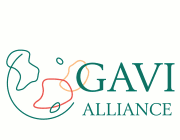 |
|
|
4 October 2000 Summary Report (Word - 25K) Topics:
Summary of Discussion Relationship Agreement between the Vaccine Fund and UNICEF (Jacques-François Martin) JF Martin outlined the substance of the document (Word document – approx. 122kb), previously distributed to the Board for review, which describes the separate yet closely interrelated functions of the Vaccine Fund and the Vaccine Fund Trust Account at UNICEF. JF Martin addressed the concern about how funds will be disbursed from the Trust Account by stating that money from the Trust Account will only be used to support programs endorsed by the GAVI Board (ref. Relationship Agreement, Annex 1&2, point 10). While most of the document is acceptable, a few donors have raised questions including the "comingling" of funds. In the interest of efficiency and moving forward, the Board agreed to approve the document, without revision. By the following day, the donors’ concerns were addressed. Collaborative mechanisms between the Vaccine Fund Board and the GAVI Board (Tore Godal) The Board agreed that the document (Word document – approx. 28kb) , which had been previously distributed to the Board for review, is clear and accurate, and can be distributed without revision. Procurement update (Steve Jarrett) The new vaccine procurement process being managed by the UNICEF Supply Division is progressing as scheduled. According to S Jarrett, the response from companies to the process has been extremely positive; 11 companies from Europe, the United States and Asia have submitted offers for hepB, Hib and combinations of these vaccines using DTP in a number of different presentations, and 3 companies have submitted offers of yellow fever. Discussions with the companies concerning specific quantities on offer will be completed by 5 October, after which time UNICEF will prepare a catalogue for countries listing available vaccines and presentations. WHO is now preparing an accompanying document that outlines technical and logistical considerations for using the different products available, including pros and cons of the different presentations. Awards to manufacturers are anticipated to be at the end of November, with orders placed in December. Countries that have a fully functional National Regulatory Authority and have their own systems for procurement that complies with WHO-recommended procedures for vaccine procurement, may continue procuring their own vaccines and receive reimbursement from the Vaccine Fund, after purchase, equivalent to the value of UNICEF’s price. In addition, UNICEF Supply Division is working closely with the PAHO Revolving Fund. The Board was assured that manufacturing capacity for the production of oral polio vaccine is in no way being impeded by the manufacturing of vaccines for the GAVI procurement process. Criteria for vaccine product allocation Steve Landry presented the Working Group’s recommendations (Word document – approx. 73kb) on how to prioritize which countries should receive the scarce combination vaccines. If criteria are not set, UNICEF Supply Division would use a ‘first-come, first-served’ approach which is inconsistent with the very strong message already relayed to countries that the GAVI process is not competitive, and that they should take time to develop strong proposals, rather than rush. While the group had originally considered a scoring system that would rate the countries according to different areas such as safety, efficiency, wastage, etc., it soon realized that a clear and completely transparent system was necessary. It has therefore recommended that countries with the lowest DTP3coverage (but above 50%) receive priority for combinations, in order to ensure the highest degree of safety and the most equitable distribution of the combinations. However, countries with very large birth cohorts that are high on the priority list, such as Pakistan and Bangladesh, will have to be considered separately. The Board approved the recommended criteria for vaccine product allocation, emphasizing the importance of ICC discussions at the country level concerning vaccine supply issues. Return to GAVI Board Documents
|
|
|
|
Copyright © GAVI |